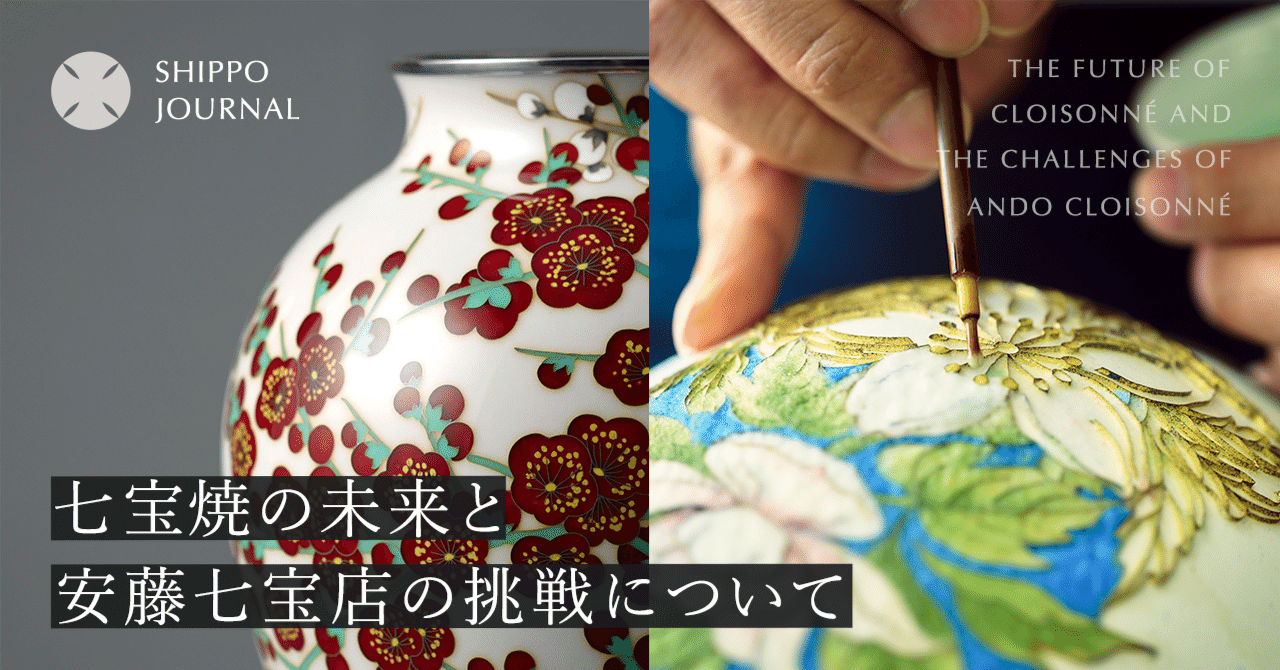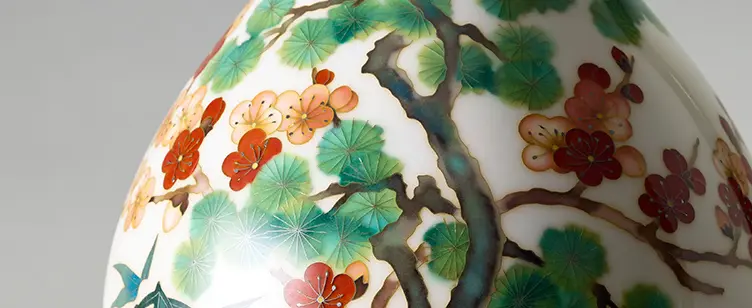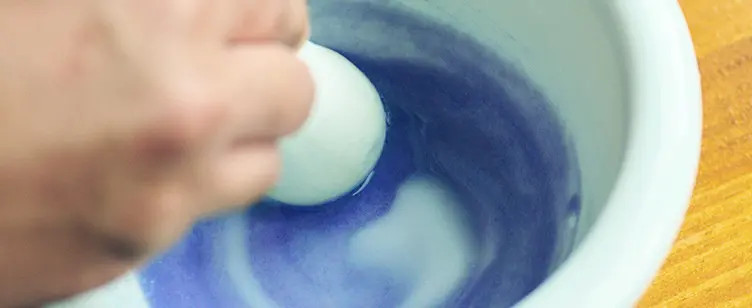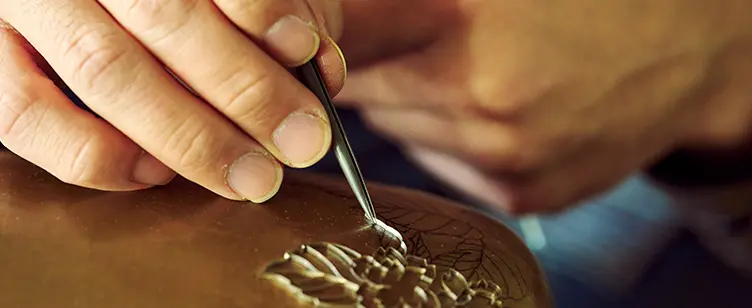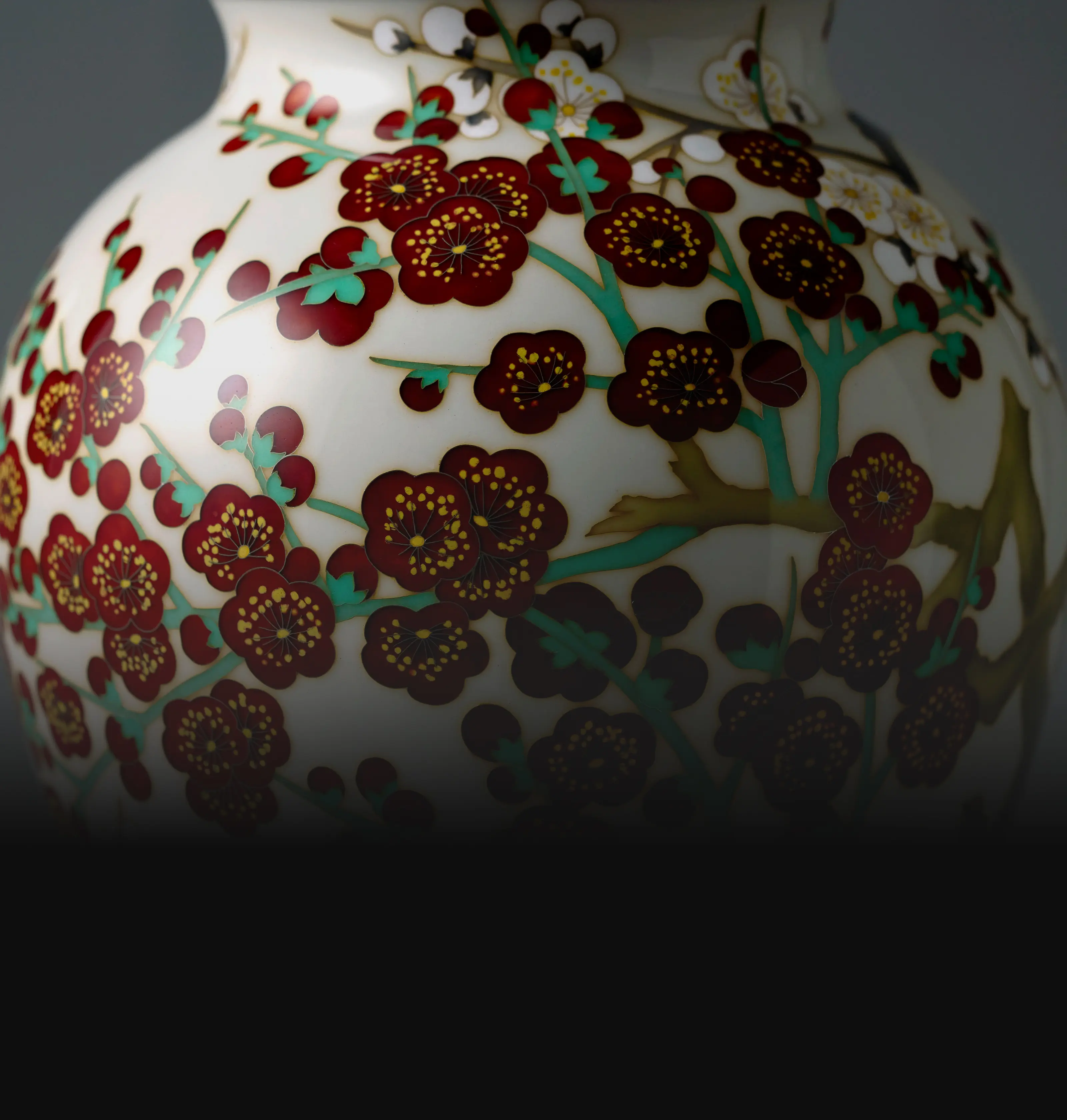Anticipating Completion, Standing Silver Wires: A Craft Nurtured by Skill and Experience
Craftsman Dialogue 03
Wires

Silver lines draw along the vivid boundaries of colors. The process of wiring (Shokusen), involves adhering wires along the contours of the designs. Planting meticulous lines with tweezers and fingertips, this delicate technique demands an artisan's concentration and experience—all for the moment it blossoms beautifully as cloisonne.
Drawing Silver Lines Based on Sketches: Creating Beautiful Boundaries Even After Firing
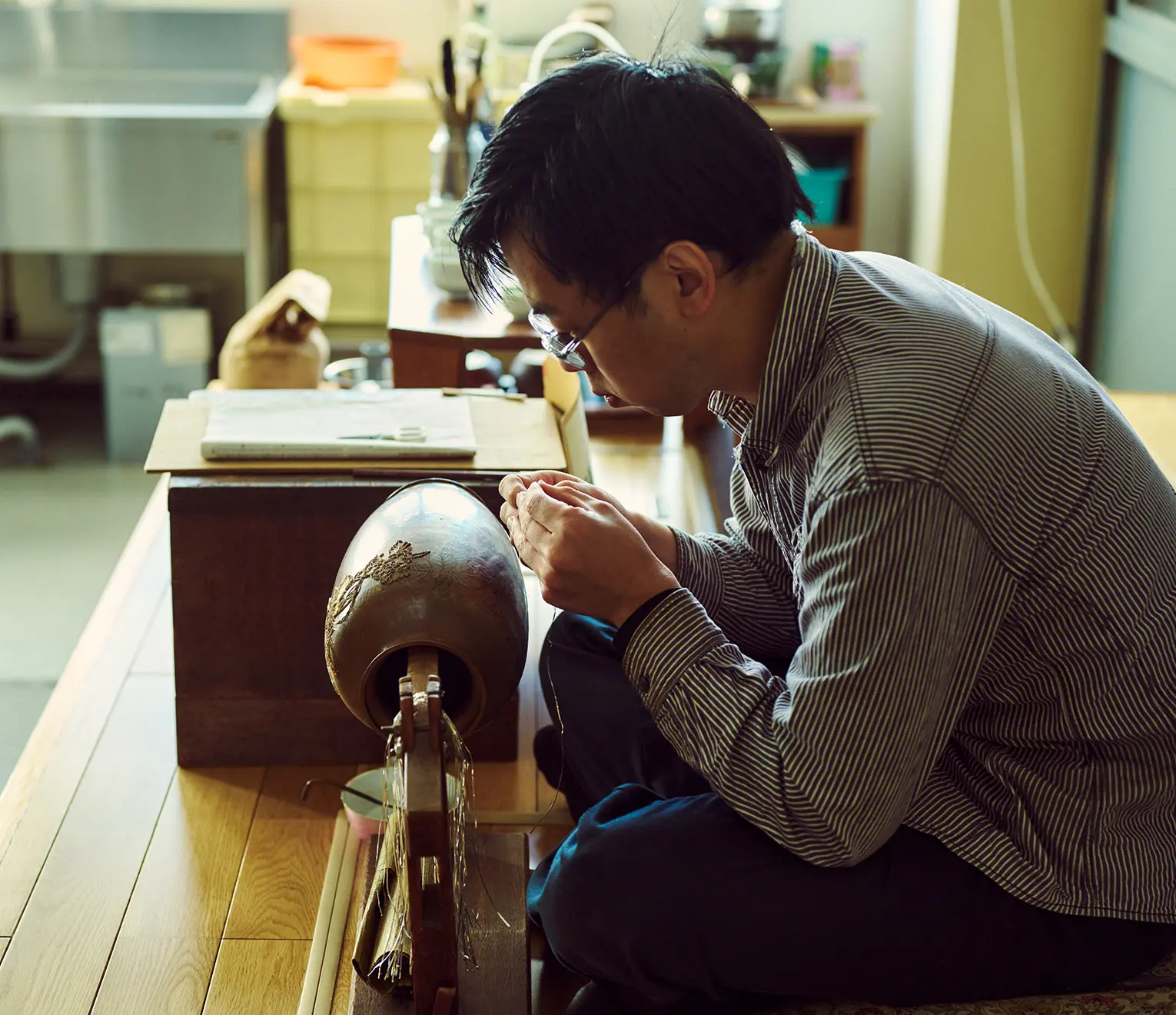
The wiring process, which occurs before coloring with enamel, is a crucial craft for creating the boundaries between colors. Concentrating on the nerves in their fingertips, artisans adhere silver wires about 1.2 millimeters high onto a detailed sketch using glue extracted from the bulbs of the Iris plant, known as Byakukyu. Once the silver wire adheres and stands perfectly vertically, the tension in the atmosphere dissolves.
"There's no manual for the wiring technique; we learn by watching the work of experienced artisans. It's all about getting used to it through hands-on experience. Since things often don't go as planned, it's a process that tests patience," says Hiroi, responsible for wiring. Whether short or long, silver wires are prone to falling. Adjusting the length and bend of a single wire and ensuring it doesn't fall, showcase the artisan's skill.

Cloisonne uses silver wire for its ability to remain beautiful and oxidation-free even after firing. Saito, in his eighth year with the company, is one of the individuals carrying on the wiring tradition. Having studied art since high school, Saito says, "The pictorial expression and meticulous designs are unique to cloisonne. Seeing the finished product with beautifully drawn silver lines brings a sense of accomplishment," highlighting the rewarding nature of the craft.
Young artisans like Saito often learn the wiring technique from retired craftsmen. Driven by a quiet passion to preserve the technique, they participate in metalwork classes held outside the company and actively engage in learning cloisonne skills. "Rather than being taught by hand, I learn by watching actual work," says Saito. Techniques that cannot be fully conveyed verbally are passed down visually to the younger generation.

Based on Original Designs, Ensuring Precise Replication: Work Down to 0.1 Millimeter Detail
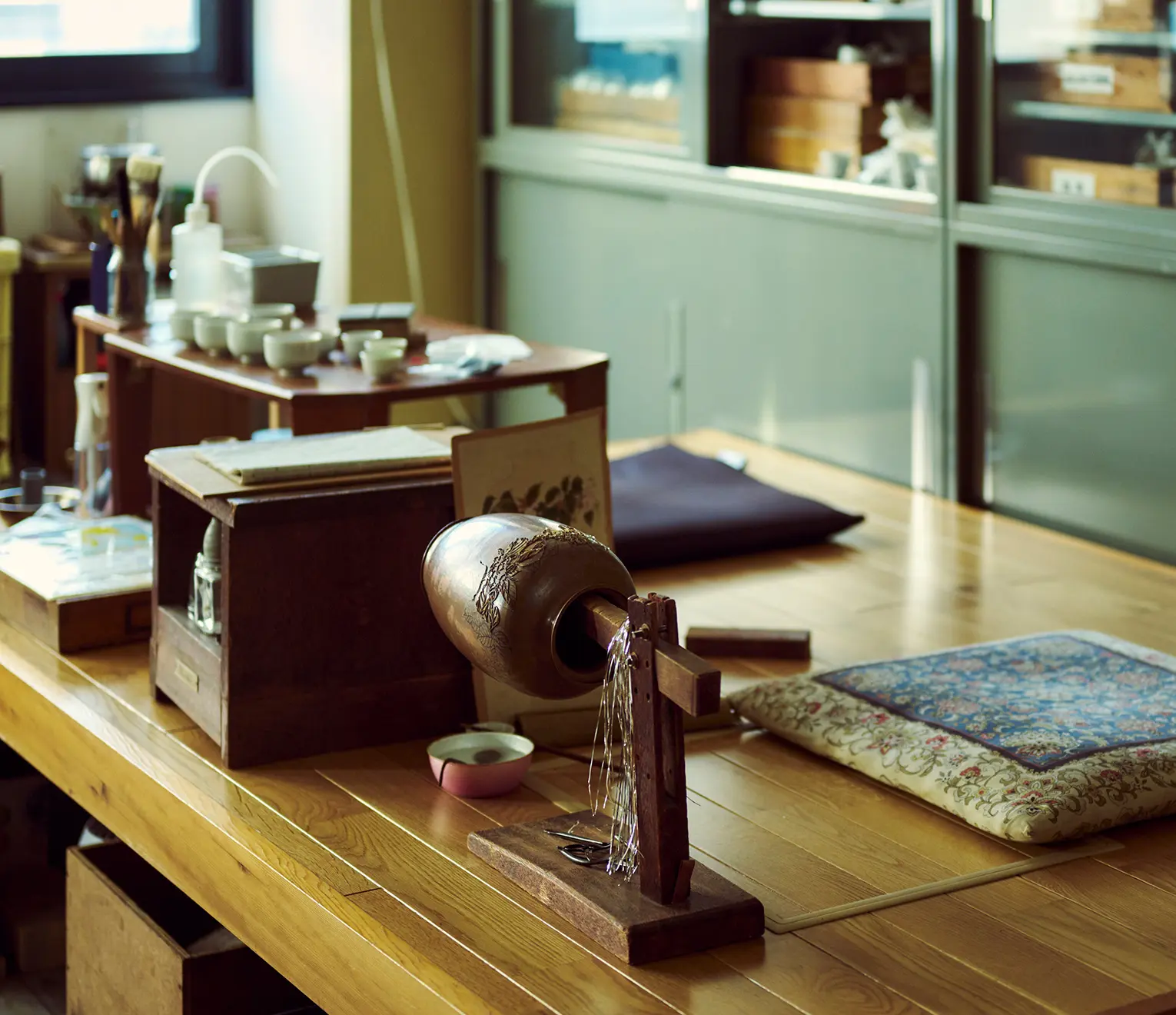
The height and thickness of the silver wire vary depending on the color, pattern, and quality of the enamel of the product. While increasing the thickness of the line makes the process more challenging, it also allows for more vibrant expressions, such as the strength of a tree's trunk. Even simple geometric patterns can feel off with a slight misalignment of silver wire.
They adjust complex patterns with multiple lines aligning using fingertips and tweezers. Their work occurs in a detailed world of 0.1 millimeter increments. "The essential tools for this process are those that fit comfortably in hand, which I make myself to improve work efficiency," says Hiroi. It is typical to use tools handed down from previous seniors. The tools of the trade are passed down to the next generation, along with the techniques.

Working from sketches drawn with ink or methyl violet, artisans meticulously confirm the design as they progress. Diverging interpretations during the sketching or wiring processes can lead to a finished product that deviates from the original design. The inheritance of skills is not solely a human endeavor. "When we receive orders with unusual designs, the first thing to consider is how to make it look natural and where to cut the silver wire. So we often use past works as textbooks." Hiroi shares his experience. Saito, too, wishes to carry on the tradition by observing and learning from his seniors. The cloisonne created today can be seen as a collaborative work between predecessors and the current artisans striving to pass these skills to future generations to cherish and preserve tradition and techniques.
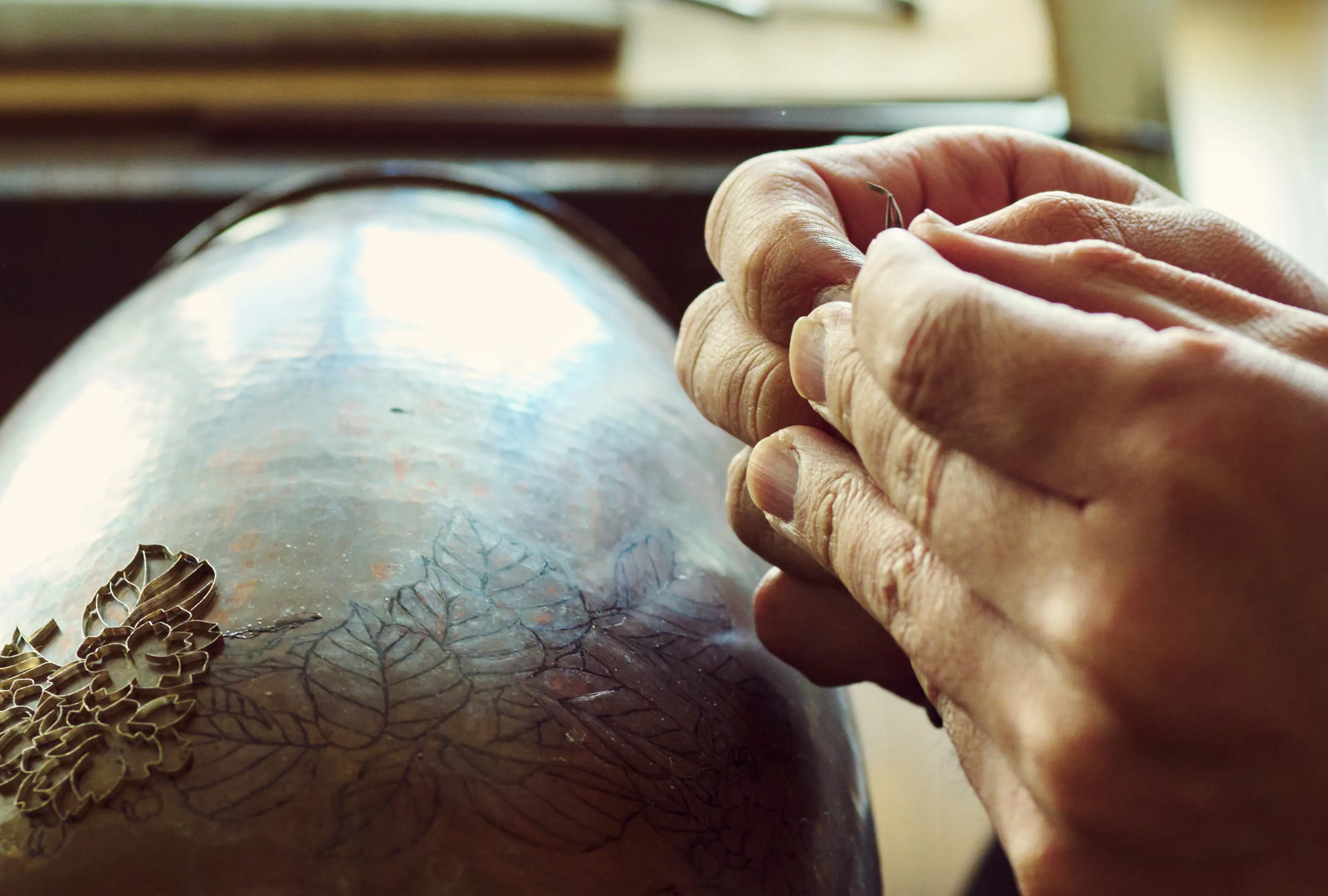
Innovating Cloisonne with Wiring Techniques: Passing Rich Expressiveness to the Next Generation
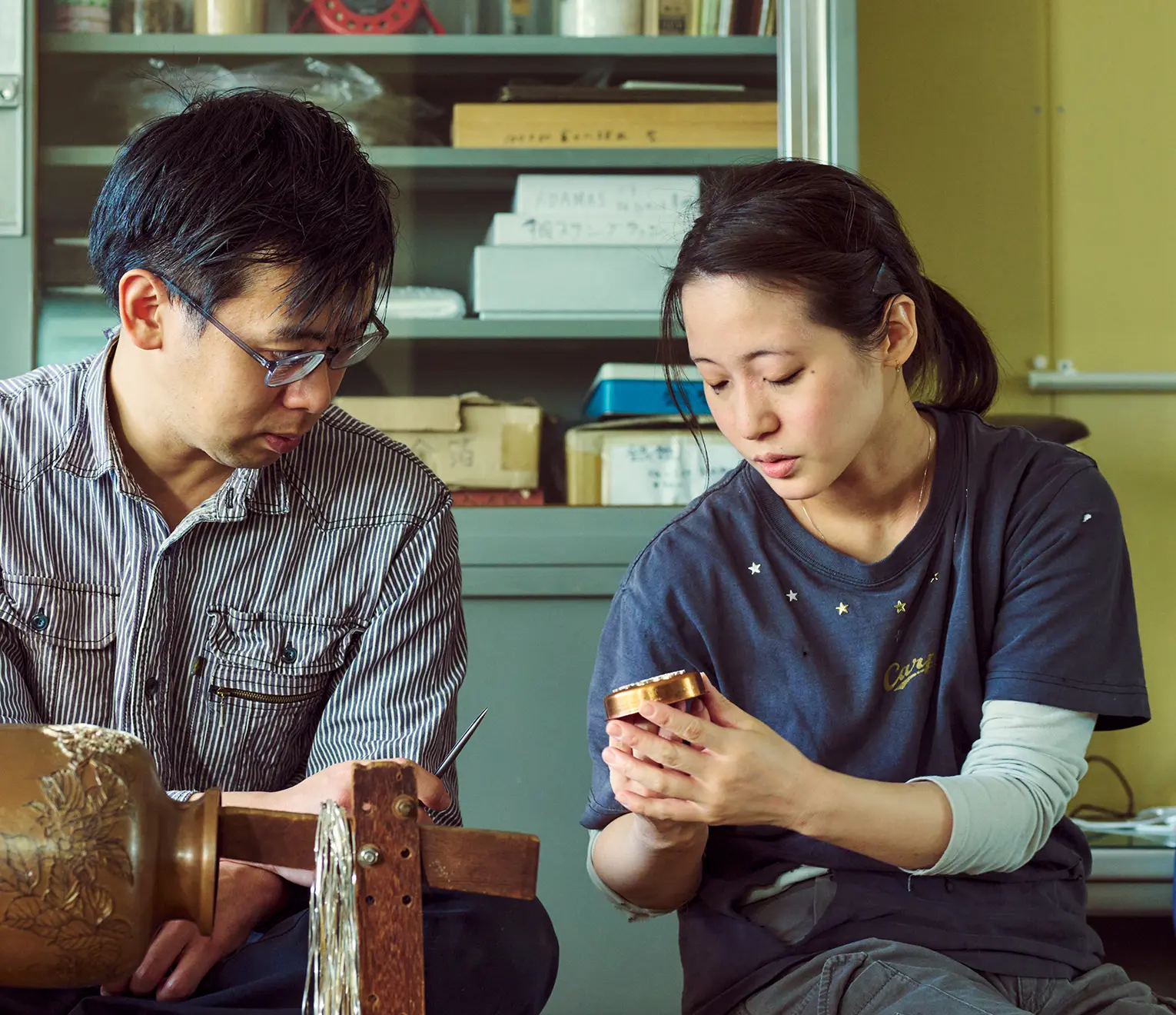
"Making patterns with wiring is challenging, especially achieving symmetry. No matter how fine the line, it requires manual adjustments by the human eye," says Hiroi while discussing the complexity of wiring, a process that demands the artisan's experience and sense of balance. The more challenging the lines, the more they enjoy the work.
"There are many types of lines. If we can create rich expressions with different heights and thicknesses, the possibilities for cloisonne could expand even further," Hiroi hopes. Following in his footsteps, Saito is eager, "By flattening a thick silver wire, we can create lines with varying thickness. I want to challenge myself to achieve a wider range of expression through wiring."

Cloisonne, known for meticulous expressions among ceramics, relies on the silent progress of wiring to create colorful works. While there's a desire to pass down these techniques, the wiring of complex three-dimensional objects like pots and vases is so rare, it happens less than ten times a year.
"To master the expressiveness of lines, one must go through numerous wiring processes. It's not just for personal gain. Our duty is to pass these techniques on, without reservation, to the next generation. I've spent five years observing and learning from my seniors, but it still isn't enough," says Saito. Artisans learn from the past and pursue expressions unique to their skills.
-
Craftsman Dialogue 01

The Delicate Balance of Strength and Emotion Transforms Rugged Metal into Beautiful Curves
-
Craftsman Dialogue 02

Expanding the Possibilities of Cloisonne with Pioneering and Innovative Techniques
-
Craftsman Dialogue 04
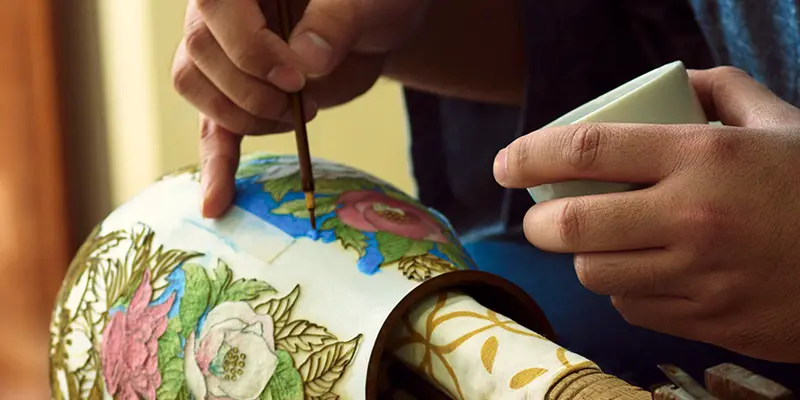
Clad in Vivid Colors, Infused with Soul: Crafting Beauty that Resonates
